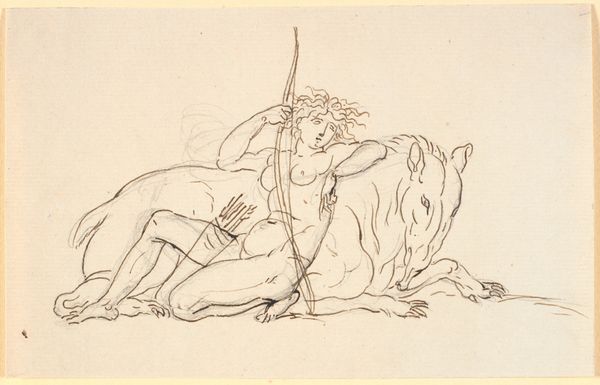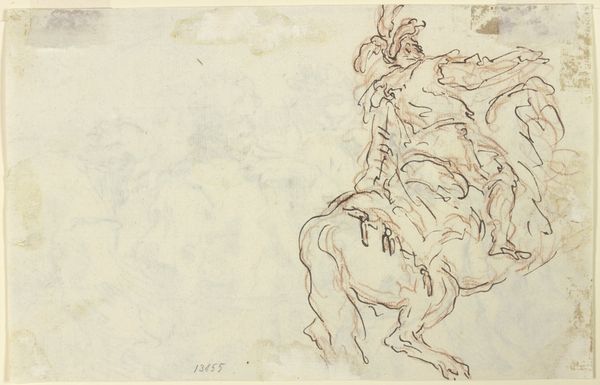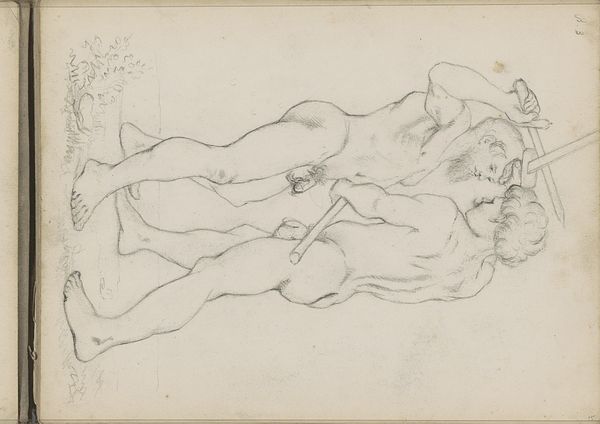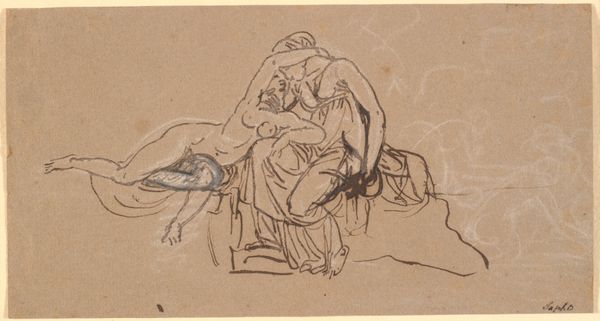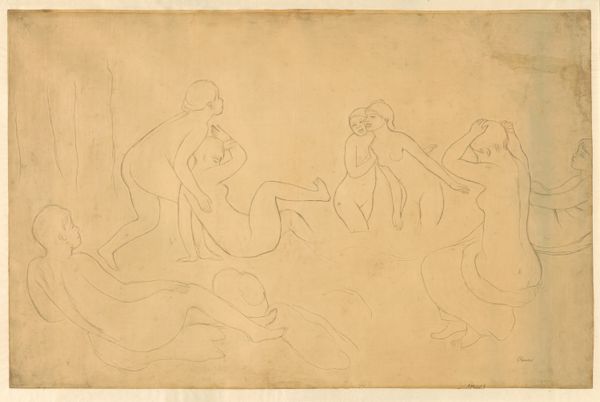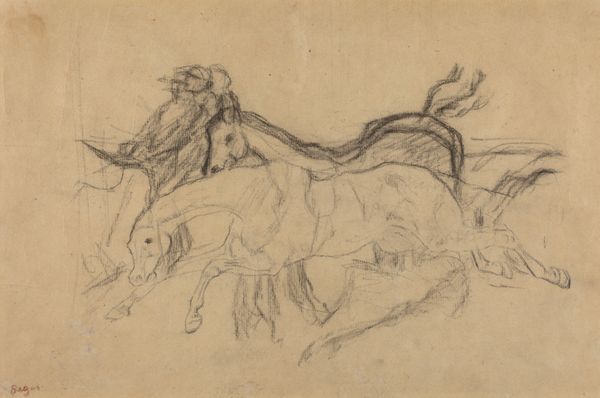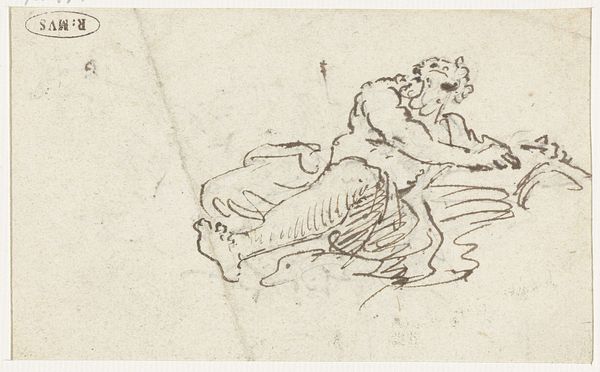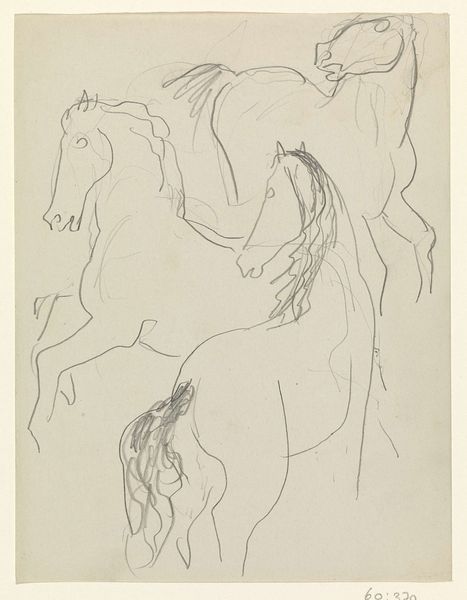
En nøgen kvinde liggende henslængt på en søhest 1743 - 1809
0:00
0:00
Dimensions: 173 mm (height) x 251 mm (width) (bladmaal)
Curator: Here we have "A Nude Woman Lying Casually on a Seahorse" by Nicolai Abildgaard. Created with ink as a drawing, sometime between 1743 and 1809. Editor: Immediately, the almost hesitant, thin line work gives a dreamlike quality. It feels less assertive than many figurative works from the Romantic period. The sketch feels both classical and otherworldly, what do you make of the theme? Curator: Well, Abildgaard, deeply invested in mythology and history, often employed classical themes to explore contemporary socio-political concerns. This piece could be seen as a subversive commentary on power and sexuality, presenting the female nude not as an object of desire, but as a figure of agency. The seahorse further emphasizes that. Editor: That’s an interesting perspective, thinking of this as a challenge to accepted power dynamics, because, formally speaking, the composition feels almost like a study. A lighter take, where the line varies to create weight in the figure and animal, to consider volume. But I'm interested if there is something I am missing, as the image is very striking. Curator: The striking image for sure also evokes ideas from feminist theory when you bring the seahorse in, because it traditionally symbolizes themes of transformation and, perhaps, fluidity. I find the depiction of a relaxed nude woman and its association with a fantastic hybrid, could actually give rise to discussions about identity and freedom that go beyond societal confines, like gender. Editor: Interesting points about identity! It’s fascinating how much interpretation arises from what appears, at first glance, like a simple sketch. Even without extensive shading or detail, the line alone captures a powerful sense of movement and imagined possibilities. But the open interpretation may speak to my point also. Curator: Absolutely. And through a modern lens, its unfinished aesthetic becomes not a flaw but an invitation. We are encouraged to bring our experiences and perspectives to complete the artwork ourselves, making it more contemporary. Editor: In that light, looking beyond technique, this could serve as a reminder that art can serve as a stage, however faint and dreamy, where old power and societal structures can be reimagined with fresh vision.
Comments
No comments
Be the first to comment and join the conversation on the ultimate creative platform.

